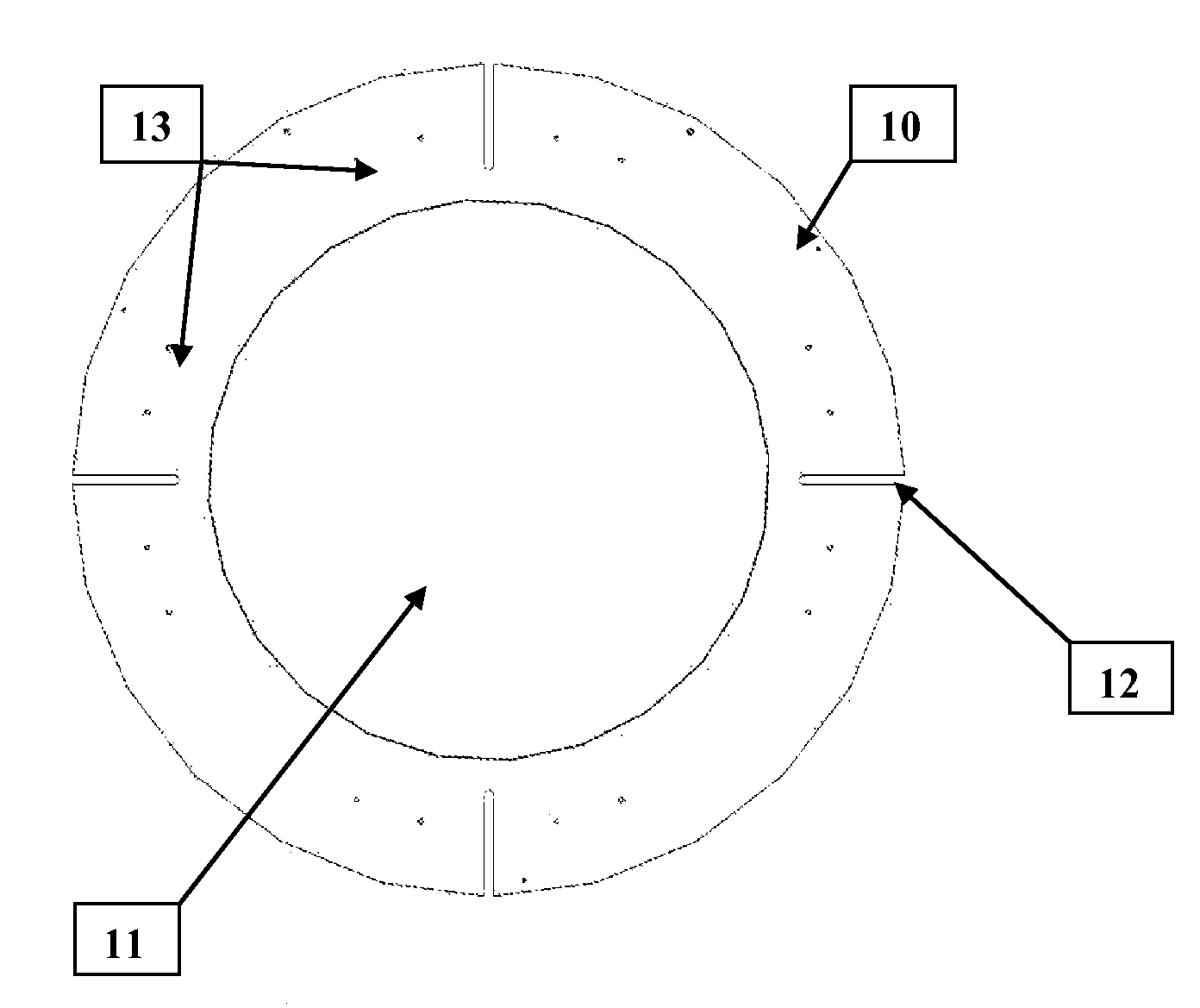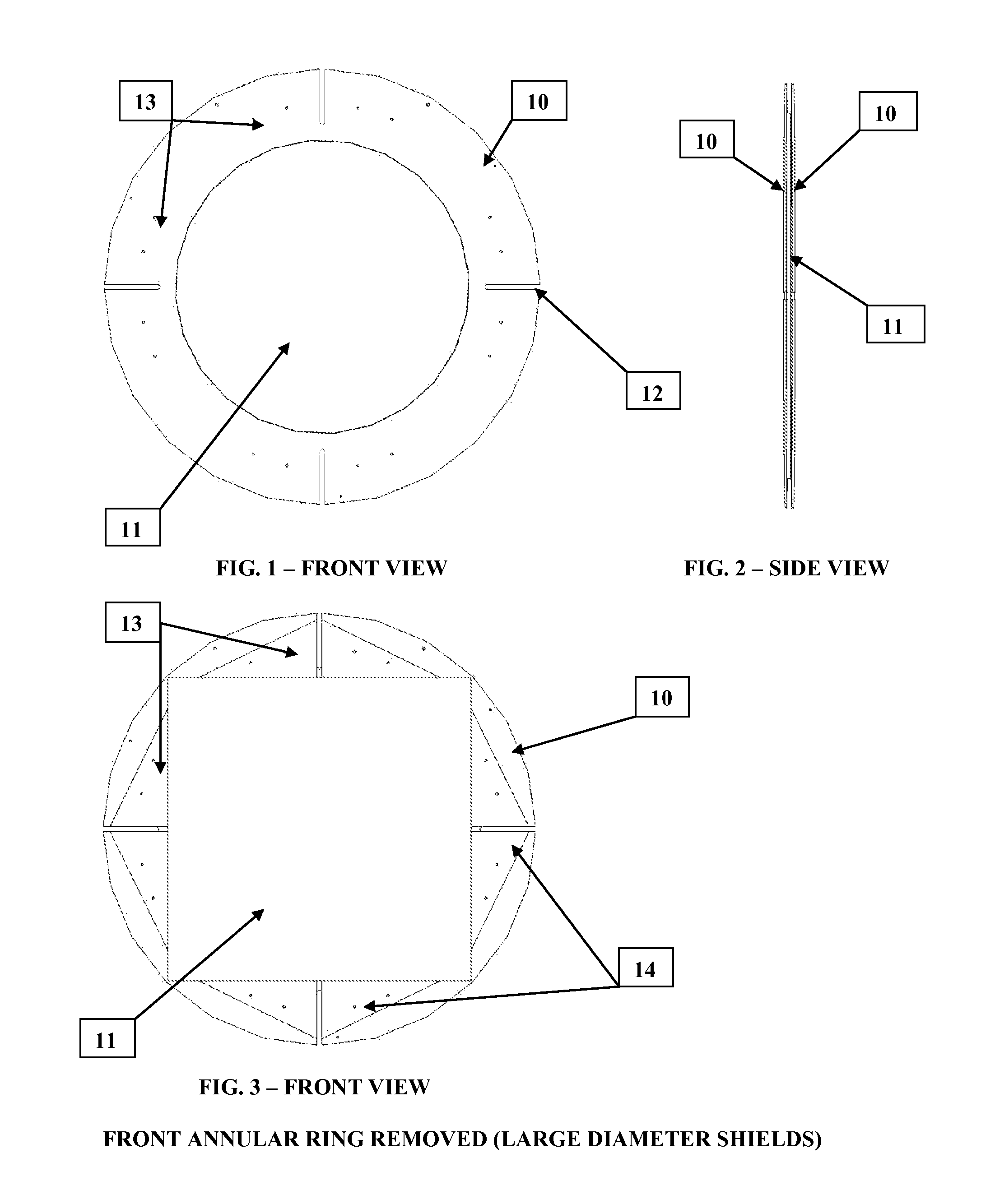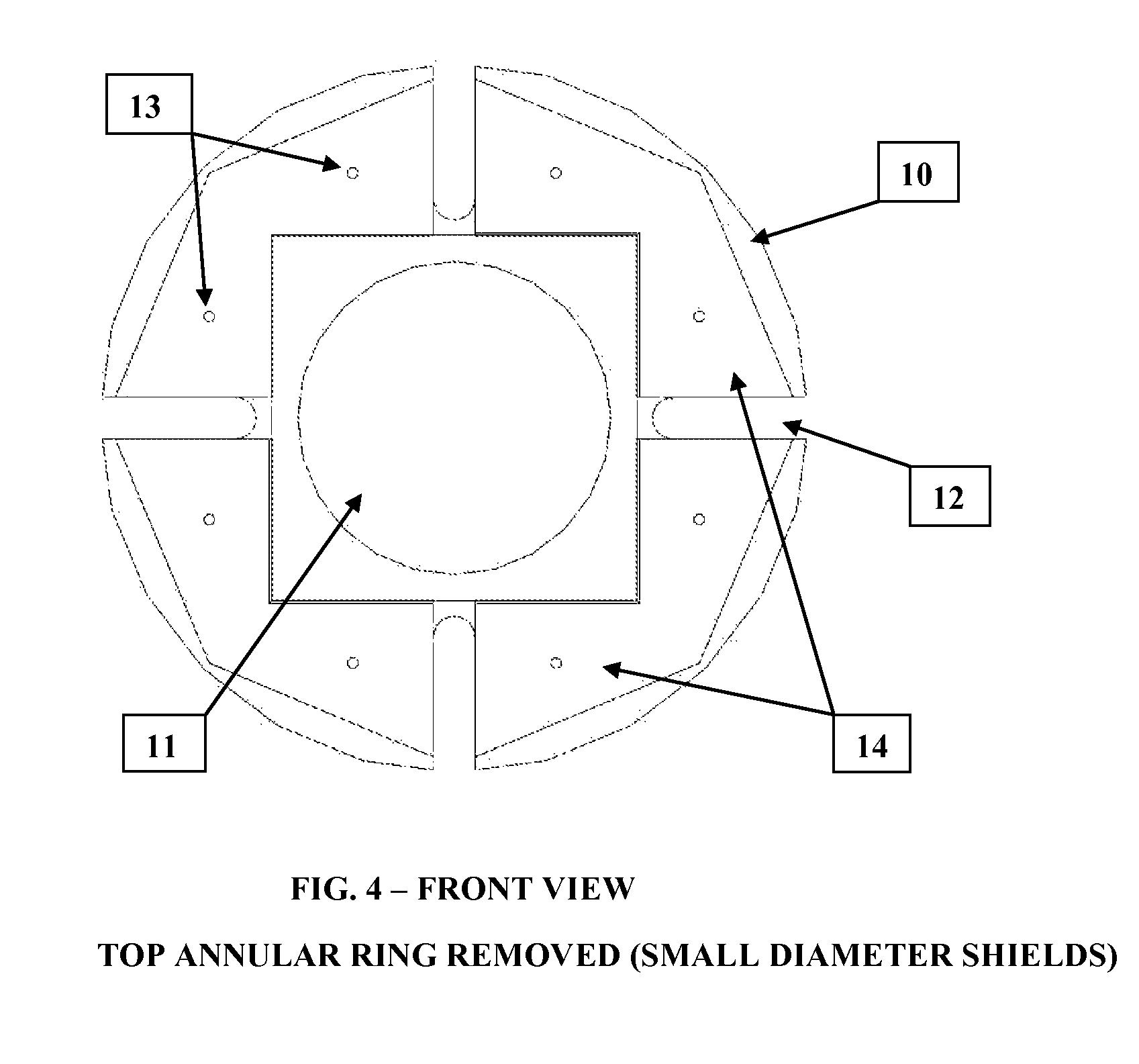Heat exchanger pressure test shield
a technology of heat exchanger and pressure test, which is applied in the direction of heat exchange simulation, door/window protective devices, lighting and heating apparatus, etc., can solve the problems of unfavorable heat exchange, undesired fluid mixing, and insufficient shielding, so as to reduce the overall number of shields required
- Summary
- Abstract
- Description
- Claims
- Application Information
AI Technical Summary
Benefits of technology
Problems solved by technology
Method used
Image
Examples
Embodiment Construction
[0017]In accordance with the best mode of this invention, FIG. 1 shows a front view of the assembled heat exchanger pressure test shield which includes the polycarbonate shielding material 11, clamped between a rear and front annular metal ring 10. The clamping means is obtained through the use of through flat head bolts, countersunk on the rear annular ring, passing through the assembly at spaced locations 13, and secured with locknuts on the front annular ring. The assembled heat exchanger pressure test shield is then attached to the heat exchanger undergoing pressure testing by removing the channel cover on the heat exchanger, then replacing with the shield and mounting with (4)—¾″ diameter studs to the heat exchanger channel cover flange at slot locations 12.
[0018]FIG. 2 is a side view of the heat exchanger pressure test shield, illustrating the front and rear metal annular rings 10, and the polycarbonate shielding material 11 clamped between.
[0019]FIGS. 3 and 4 show the front v...
PUM
 Login to View More
Login to View More Abstract
Description
Claims
Application Information
 Login to View More
Login to View More - R&D
- Intellectual Property
- Life Sciences
- Materials
- Tech Scout
- Unparalleled Data Quality
- Higher Quality Content
- 60% Fewer Hallucinations
Browse by: Latest US Patents, China's latest patents, Technical Efficacy Thesaurus, Application Domain, Technology Topic, Popular Technical Reports.
© 2025 PatSnap. All rights reserved.Legal|Privacy policy|Modern Slavery Act Transparency Statement|Sitemap|About US| Contact US: help@patsnap.com



